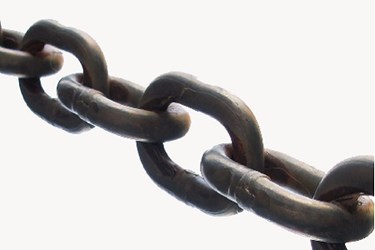Checkup On The Cold Chain… How Can It Be More Sustainable?

By Sam Lewis

The Institution of Mechanical Engineers has released a report proposing liquid nitrogen be used for both energy and cooling, lessening dependence on diesel fuel
Improving refrigeration in the cold chain will subsequently improve the quality of life in many developing nations was the spotlight of a report, A Tank of Cold: Cleantech Leapfrog to a More Food Secure World. The report suggests a network of liquid nitrogen hubs could be set up to reduce not only solve the issue of electricity shortages from dependence on diesel, but the effort would also reduce food waste in the developing world.
According to IMechE, growing populations in developing nations “will require new food systems to be established that create more rural-urban supply chains, and will need to produce new types of food to meet changing consumer expectations. All of this will need to be achieved in nations that are anticipated to be simultaneously experiencing the most severe impacts of climate change.” High levels of waste, especially in those areas with substandard electricity, are also noted in the report. “Much of the food produced for human consumption today does not actually reach a human stomach, as it is either lost within the food-supply system through spoilage — largely as a result of poor handling and inadequate infrastructure — or is discarded in the marketplace or home as waste as a result of societal and consumerist behavior. In both cases, this wastage, which is estimated to be 30 to 50 percent of global production, is largely unnecessary and also represents waste of the associated water, energy, and land used to produce this food.”
What's The Impact Of Big Data In The Cold Chain?
So, how does this problem get fixed? Food waste is a global issue and taking it down will require change in the mindset of society. A better approach is prevention. Basic engineering, handling, logistics, and management practices can reduce food waste while, at the same time, reducing the usage of diminishing natural resources. IMechE continues by saying, “Cold is the key to tackling the loss of perishable produce. In this regard, it is estimated that around a quarter of total food wastage in developing countries could be eliminated if these countries adopted the same level of refrigeration equipment as that in developed economies. Establishing a continuous chain of temperature-controlled cold environments from the point of harvest to the marketplace and on into the home — a cold chain — is required.”
The challenge at hand is acquire a cold chain in a manner that not only reduces wasted food, but is sustainable, minimizes emissions, is affordable, reliable, and easy to create, operate, and fix should problems arise. IMechE’s report says energy storage is the main factor to regulating an irregular power supply, with storing cryogenic energy as a main component in providing refrigeration and electricity. However, the report acknowledges cryogenic methods do not use traditional methods of refrigeration, which could cause harm to the environment and health issues if handled improperly.
Case Study: Wireless Temperature Monitoring Cuts Cost Of Loading Refrigerated Trailer Trucks
But, IMechE acknowledges many benefits of cryogenics. The report states, “The cheapest form of cryogenic energy storage is based on the use of liquid air, which involves the liquefaction of atmospheric air. Once liquefied, in addition to providing on-demand power and cooling for pre-cooling, chilling, freezing and cold storage, liquid air can deliver the energy required to drive a simple cryogenic piston engine that can form the basis of a zero-emissions refrigeration unit for transport vehicle.” Furthering, the report reads, “This is a particularly useful application, as the traditional diesel-fueled unit not only suffers from energy security issues, due to its reliance on diesel, but also leads to environmental degradation through emissions of air-polluting nitrogen oxides and particulate matter, as well as greenhouse gases.”
The report concludes by offering three pieces of advice:
- Newly developing and quickly-industrializing nations’ governments must support cold-chain investments to improve food security
- Non-governmental organization should help and offer incentives to developing nations to create and implement sustainable cold chains that use renewable energy
- Members of the engineering community should assemble and outline the possible benefits a united cold chain would offer both the developed and developing world
